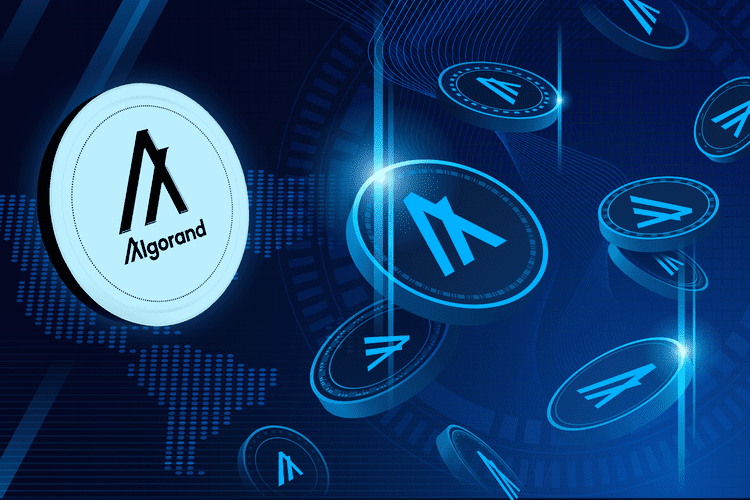The Underlying Technology of Algorand

The blockchain technology is going through rapid evolution in front of our eyes. Bitcoin ushered in the era of blockchain technology and is often known as the first-gen blockchain. However, the first-gen blockchains were limited to payment systems and protocols. This all changed with the advent of Ethereum, who started the smart contract-era. Ethereum and other second-gen blockchains were programmable protocols, which allows developers to create their own decentralized applications.
However, second-gen problems are plagued with practicality and scalability problems. What’s the point of creating a decentralized Twitter if it takes you ages to post a tweet, right? This is the problem that third-gen blockchains plan on solving. They deliver the vision of second-gen blockchains with scalability, speed, interoperability, practicality.
One of the champions of blockchain 3.0 happens to be Algorand. The brainchild of Turing Award-winning cryptographer Silvio Micali, Algorand is the world's first open source, permissionless, pure proof-of-stake blockchain protocol for the next generation of financial products.
Algorand and scalability – Solving the trilemma
But, wait. What exactly is the scalability trilemma? Let’s find out.
- Decentralization: PPOS is not dependent on “the few” doing their job right. In traditional POS, a node’s voting power is directly proportional to the size of its stake. As such, more affluent individuals and companies tend to get more opportunities to make money. EOS’s DPOS straight-up elects 21 block producers from the entire network who take care of the consensus.
- Scalability: Algorand transactions achieve finality, by default. This is in stark contrast to Bitcoin, which requires a 10-min block time to ensure that transaction history won’t get overwritten by finality problems. Algorand can achieve swift block times (usually takes a few seconds). A small committee validates each block, and the committee member doesn’t need to directly communicate with each other, thanks to Algorand’s innovative cryptographic self-selection technique.
- Security: Firstly, it is impossible to rig the consensus system since the validator chosen secretly from the network. As such, a potential attacker won’t know who the validator is beforehand. Plus, along with the voting committee, validating a block is routinely re-selected after every step, which makes corruption impossible. Also, Algorand’s instant finality ensures that forking the protocol is impossible
Summarizing Algorand Features:
- The near-instant lottery, coupled with a block production completion rate of about 4 seconds, enables the mainnet to deliver an over 1000 TPS throughput.
- The protocol is highly scalable, secure and practices proper decentralization.
- A block once attached to the chain cannot be altered in the future, promising no future forking.
- Algorand is developed with DeFi in mind, and thus, naturally, the entire ecosystem is built to benefit big organizations in every way.
Algorand’s Important Feature Set
Just like other blockchain 3.0 platforms, Algorand 2.0 has adopted a layer-1 focused service implementation policy. However, the developers were tasked with the delicate task of balancing and optimizing all these services without sacrificing speed and scalability. So, how do they plan on doing that? Let’s check them out.
#1. Algorand Standard Assets (ASAs)
The native token of the Algorand ecosystem is ALGO. Many blockchains allow tokens or assets to be created and used on their networks, but this generally requires additional code or for the asset to be moved to Layer-2. The Standard Assets feature will allow anyone to create a Layer-1 token or asset on the Algorand network. The property of these assets are as follows:
- The newly created tokens inherit all the same features, security, transaction finality, and performance of the primary token (Algo).
- The standard assets are configurable and can be allowed to represent virtually anything.
ASA supports the following token types:
- Fungible assets. Cryptocurrencies, stablecoins, and utility tokens.
- Non-fungible assets. Gold, a digital collectible, a single piece of jewelry.
- Restricted fungible assets. Security tokens, securities.
- Restricted non-fungible assets. Licenses, certifications.
#2. Atomic Transactions
Atomic Transfers groups together fungible tokens of multiple parties and process them simultaneously, thus offering a fast, low cost, and secure solution. This benefits various daily trade activities such as:
- Operate trades without trusted intermediaries in DEX.
- Simultaneous multi-party payments.
- Group payments facility where payments get approved only when everyone pays.
#3. Algorand Smart Contracts (ASC1s)
These ASC1s can fulfill multiple roles such as:
- Post-and-sale transactions
- Securitized loans
- Crowdfunding
- Accredited-Only Transactions
- Multisig Wallets
#4. Fast Catchup
This feature enables developers to begin working on their DApps without waiting for the entire blockchain to sync. This syncing process can take hours or even days, depending on the size. Developers can download either the entire blockchain or from a particular block where the previous blocks are hashed.
Conclusion
Currently, with blockchain 3.0 is on the cusp of going properly mainstream. In fact, some have argued that it has received mainstream adoption already. If that’s indeed the case, then we need to have a protocol that can empower developers to create decentralized applications easily. Algorand has positioned itself to rule the blockchain 3.0 space with its many features and ingenious cryptographic protocols.